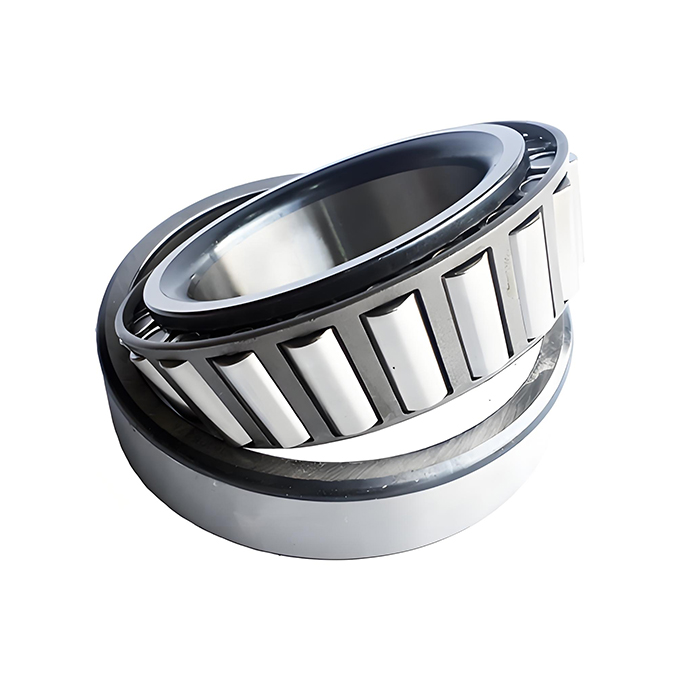摩擦防止ベアリングの分類, ほとんどの場合 転がり軸受転がり軸受は、軸受輪(内輪と外輪)、転動体、転動体保持器(ケージ)で構成されています。転動体保持器は、転動体を一定の間隔で分離し、内輪と外輪の軌道面内で固定し、自由に回転できるようにします。

転がり軸受は、大きく2つに分類される: ボールベアリングところ軸受がある。玉は幾何学的に内輪と外輪の軌道面に「点」で接触しますが、ころの接触面は「線」で接触します。ころには、円筒ころ、針状ころ、円すいころ、球面ころの4つの基本的な幾何学的スタイルがあります。転がり軸受は、荷重のかかる方向によってさらに分類することができます。
その両方だ。

一方 転動体と軸受 転動体と軌道面の接点で)軸受にかかる荷重を受けますが、保持器は直接荷重を受けません。保持器は、転動体を互いに等しい距離に保持し、転動体を強制的に負荷ゾーンに進入させ、転動体の脱落を防ぐ役割を果たすだけです。
ボールの設計と特性 ローラーベアリング チャート
内容
単列ラジアル玉軸受 ラジアル荷重やスラスト荷重とラジアル荷重の組み合わせに適しています。この設計により、高速運転でも精密な公差が得られます。この軸受の保持器はプレス鋼です。高速回転用には、真鍮製保持器もあります。位置決めスナップリング付き軸受もあります。
無給油ベアリング 長寿命グリースが充填されたシール、またはシールドが一体化されています。多くのアプリケーションでは、これらの軸受は、補助的なシール、クロージャ、または保護装置なしで使用することができます。この設計は消費者に最低の製造原価を提供する。これの境界次元 タイプは、対応するベアリング シールやシールドなし
シールドボールベアリング は、片側または両側(それぞれ接尾辞ZとZZ)が外輪に固定された金属シールドで保護されています。このクローズクリアランスラビリンスシールは、潤滑油を保持し、異物の侵入を防ぎます。
シール付きボールベアリング 外輪と内輪の接触はシールリップによって行われます。内輪との接触はシールリップ(接触接尾語2RSが標準,NTNベアリングではLLUを使用)。また、内輪との接触はラビリンスシール(非接触型)を使用しています。 LLBはNTNベアリングで使用されています。)を使用することで、常に確実なシーリングが可能です。
単列アンギュラ玉軸受 ハイ・ショルダーとロー・ショルダーのレースウェイが特徴である。これらの対向する軌道面は、次のようなスラスト荷重を支えるように設計されている。
一方向だ。これらは ベアリング 正しい予圧がベアリング内で発生するように、工場で予圧をかけることができます。このシリーズの軸受は、荷重下で特定の接触角を持つように、特定の内部クリアランスで組み立てられています。
複列アンギュラ玉軸受 内輪と外輪に二重軌道面を持つ。2つの列は、接触角が背中合わせの単列軸受のペアに似ているように関連しています。シリーズによっては、レースが連続しており、どちらの方向にもスラスト荷重を受けることができます。他のシリーズには充填溝があり、スラスト荷重がリングの切り欠きのない面に対して作用するように取り付ける必要があります。
複列自動調心ベアリング 2つの深い軌道面に2列のボールを配置した内輪と、1つの球面軌道面を持つ外輪を利用する。この
この方法では、内輪と外輪が相対的にずれる可能性がある。その結果、比較的大きな角度でボールにモーメント荷重がかかる。
円筒ころ軸受 ローラーは本質的に円筒形をしている。これにより、円筒形の内輪と外輪との接触が修正される。
ローラーは、内輪または外輪の研削リブによってガイドされる。
円すいころ軸受 ローラーと軌道面が共通の頂点で接するように配置された円錐形のローラーと軌道面を利用する。ころは、ころの大端と内輪のリブとの接触によってガイドされます。これにより、ラジアル荷重とシングルスラスト荷重に対して高い能力を発揮します。
自動調心ころ軸受 この軸受は、2列のころが別々の軌道面に配置されているため、スラスト角度の誤差を補正することができます。ラジアル方向とスラスト方向の両方が大きい。 負荷容量 大きな衝撃や衝撃荷重に耐えるため、重工業用機器に適している。
デュプレックスベアリング 共通で2本セットを使う 内輪と外輪がしっかりとクランプされたシャフト。複式軸受には、対面式(DF)、背中合わせ式(DB)、タンデム式(DT)の3つの基本的な組み合わせがある。
単一方向 スラストベアリング
一方向スラスト ベアリングは、ボール溝を持つ2枚のワッシャーで構成されています。 ボールとケージがこれらの間に取り付けられている。
溝がある。通常、プレス加工または機械加工されたケージを備えており、中程度の速度でスラスト荷重を負荷するのに適している。
ダブル方向アンギュラコンタクトスラスト玉軸受 は、通常のアンギュラ玉軸受よりも接触角が大きい背中合わせの複列軸受です。主に工作機械用のスラストベアリングとして設計されています。機械加工された黄銅製保持器を使用します。
自動調心ころ軸受 複列自動調心ころ軸受に似ているが、接触角が大きい。内輪のフランジにガイドされ、外輪の球面軌道面に接触します。接触角は約45°です。通常、機械加工された保持器が使用され、油潤滑が推奨されます。
ベアリングユニット 玉軸受またはころ軸受をハウジングに取り付けたもの。ハウジングは鋳鉄製が一般的ですが、他の金属製や非金属製もあります。ハウジングは、アプリケーション内での軸受の剛性と確実な位置決めを提供します。また、ハウジングとベアリングは一体として交換できるため、ベアリングの交換作業が簡単になります。